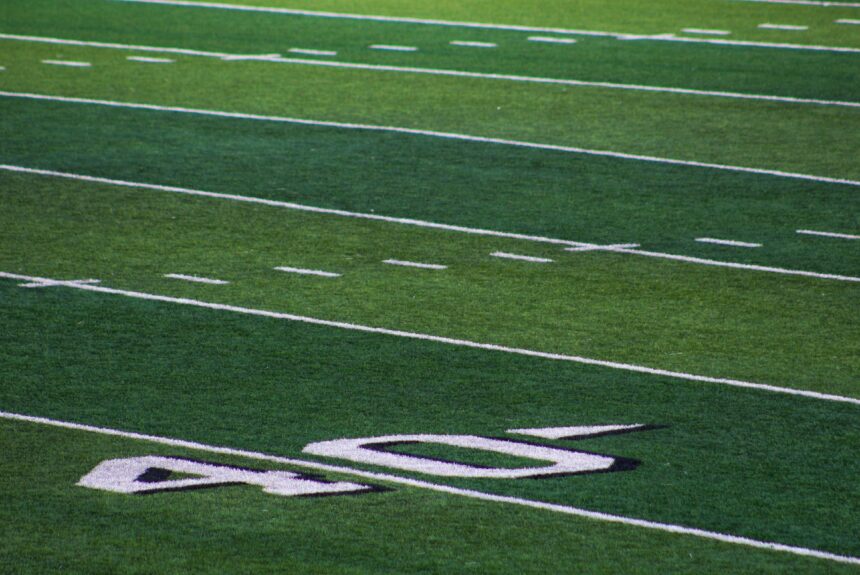Artificial turf, the choice playing surface for 14 NFL stadiums and 65% of college football programs, has recently come under scrutiny.
This past February, the Los Angeles Rams played the Cincinnati Bengals in Super Bowl LVI at SoFi Stadium in Los Angeles. During the first half of the game the Rams’ star receiver Odell Beckham Jr. (OBJ) was dominating the Bengals secondary, recording 2 receptions for 52 yards and the game’s first touchdown.
What could have likely been a career night for Beckham was unexpectedly ended late in the second quarter when OBJ sustained a non-contact ACL tear on a short crossing route. The injury to Beckham led to outcry from some of the league’s top stars who blamed SoFi’s artificial turf for the injury. 49ers star tight end George Kittle called for a ban on artificial turf in NFL stadiums and is now petitioning the league to “flip the turf” and swap stadium turf for real grass.
From a player safety standpoint, it appears that a “flipping of the turf” is needed. According to NFL Players Association (NFLPA) president and former Cleveland Browns center JC Tretter:
“Artificial turf is significantly harder on players’ bodies than grass…Specifically, players have a 28% higher rate of non-contact lower extremity injuries when playing on artificial turf. Of those non-contact injuries, players have a 32% higher rate of non-contact knee injuries on turf and a staggering 69% higher rate of non-contact foot/ankle injuries on turf compared to grass.”
While the health of players should certainly be considered, artificial turf also brings harm to the health of our environment.
A 2017 report from the Synthetic Turf Council estimated that 750 fields would need to be replaced annually by 2020. As Marjie Lundstrom and Eli Wolfe of The Atlantic point out:
“The average field contains approximately 40,000 pounds of plastic carpet and 400,000 pounds of infill, according to the report. This means that as much as 330 million pounds of waste could require disposal every year.”
This problem is not unique to the United States either. An environmental impact study on artificial turf that was commissioned by FIFA in 2017 notes:
“Recycling of artificial football turf is not widespread. The majority of the manufacturers interviewed for this study claimed their products are ‘recyclable’, but none are taking significant steps to make sure this happens in practice.”
This is especially significant, given the fact that recycling facilities are readily accessible.
“[R]ecycling is a viable option particularly in Europe. The close proximity to a recycling facility and the proliferation of (expensive) incineration means that there is very little justification for pitches located in Western Europe to not be recycled.”
>>>READ: Recycling Breakthroughs are Addressing the Plastic Pollution Problem
The FIFA report does outline market viability and issues with containments as a few reasons for the lack of recycled pitches. The infill of the turf, which is often sand, lessens the efficiency and raises the costs of the recycling process which disincentivizes recycling altogether. Additionally, the turf is often made with different types of multiple plastics which leads to the recycled material being used for low-grade applications. This creates an open loop system where old turf fields cannot be repurposed into newer fields, increasing overall costs for recycling pitches.
In the United States today, artificial turf covers roughly 6,000 acres of land. Making a switch to grass could provide several environmental and social benefits.
Environmentally and ecologically, natural grass has been proven to purify rainwater and groundwater quality and reduce runoff. Additionally, grass reduces erosion and boosts soil quality.
Like trees, grass has also been shown to lower the temperature of surroundings which can benefit mood and mental and physical well-being. One study has linked more trees in cities to fewer cases of heatstroke and a significant reduction in projected heat-related deaths.
The heat island effect, which occurs in cities when structures such as roads, buildings, and even artificial turf absorb and reemit the sun’s heat, can be reduced with more green space like grass. This not only benefits population health but societal health. In Baltimore, for example, crime declined by 40% as more greenery was introduced throughout the city.
>>>READ: One Unexpected Sustainable Architecture Tool: Oysters
In terms of climate benefits, the data is mixed. While the carbon sequestration potential of wild grasslands is well-documented, maintenance of lawns can often lead to more CO2 being emitted than captured. The EPA estimates that gas-powered lawn mowers are responsible for 5% of greenhouse gas emissions in the United States, but Princeton University says that switching to electric lawn mowers could negate many of these emissions.
This is not to say that artificial turf offers no benefits. Local towns and parks can save time and money through reduced maintenance costs by making the switch to artificial turf. One company estimates the saving to be more than $15,000 per year. Synthetic turf can also eliminate the emissions from lawn maintenance. Fuel use alone can top 800 million gallons of gas annually, with 17 million additional gallons being spilled in the process.
As municipalities look to become more eco-friendly a switch to grass may be beneficial to the environment and local ecology. In the case of the NFL, it may just lead to fewer injuries of the league’s greatest superstars.
The views and opinions expressed are those of the author’s and do not necessarily reflect the official policy or position of C3.
